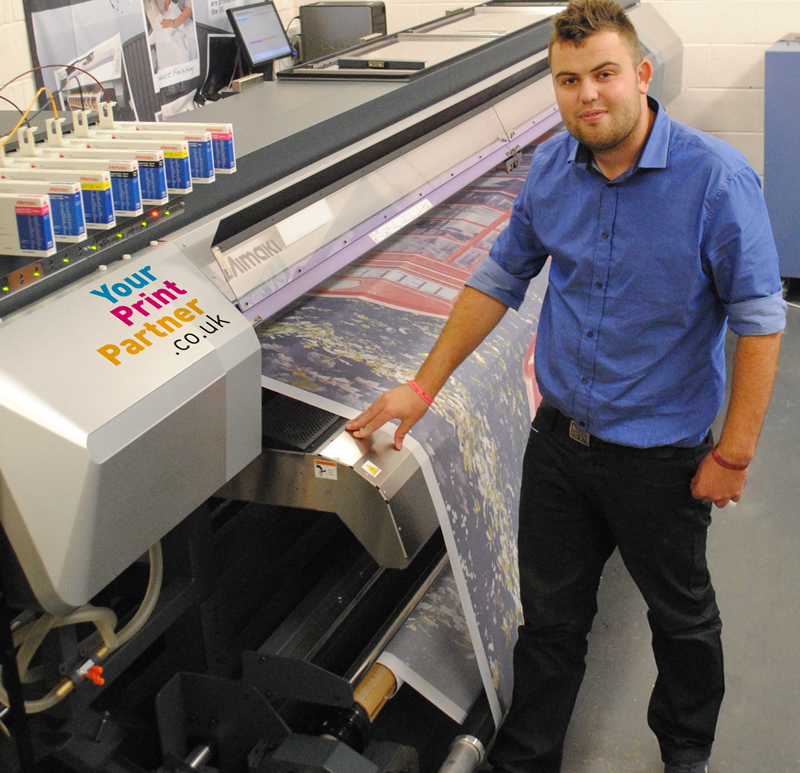Stuart Maclaren of Your Print Partner discusses the pros and cons of fabric printing – and why it’s worth taking another look at getting involved.
Your Print Partner has had the good fortune to become successful in the textile print market in a short period of time (see http://www.imagereportsmag.co.uk/features/business/leading-lights). Now I think it’s only fair that I share some of the insight gained on that often painful, but worthwhile path.
Your Print Partner was established just over three years ago with a mission to bring back to the UK fabric printing requiring fast turnaround times. This was clearly going to be a challenge - not many companies were offering large-format fabric printing in the UK, and those that did would typically work on a seven to ten day turnaround.
The first thing I had to work out was which machine to buy. I started by looking at all the different main manufacturers to see what machines they had on offer, with speed and ink costs all playing a part of the overall choice. I chose a Mimaki machine and it was delivered. Then came the fun part.
Normal PVC printers and flatbeds all print to the end colour, whereas direct-to-textile printing does not. Most blues when you print come out green and you could have what looks like banding in the print but when it goes to the heat press the banding disappears and the colours come to life. The colour brightness is a result of the fabric coating and also the print kit you use. Different fabric suppliers have slightly different coatings, so we have to work closely with our suppliers to establish which materials will produce the best results. So we have rolls of fabric. With the normal PVC you would now be able to use a machine to weld, or by hand put on tape and eyelet. But polyester materials tend to shrink, so we learned we would need to make sure the size was still OK for the end product being produced.
A number of companies are now offering machines to cut fabric. However as a start-up, these machines are costly, and they take up a large area as they tend to be about the same size as a flatbed. You also need a high volume of print to make this a cost effective route. We currently have a number of sewing staff who are so quick with the scissors that they would have done the work in the time it takes to set it up the machine.
I admit that finishing is a little bit of a pain as it can be time consuming and labour intensive but I think that this way you make sure you get the highest standard of finish and sometimes the attention to detail from an actual person is better than any machine can give you.
Despite the production hassles, I believe the future of large-format print is moving more towards the fabrics – just look at the amount of feather flags around at sports events, retail outlets and fuel stations.
Yes there currently is still a big demand for PVC banners, but as more and more new products come out with fabric graphics I think now is the time to be looking at offering them to your customers.
As demand for print machinery in the UK grows, we will see costs coming down and production rates going up. Just this week I was watching footage online of a new machine that can print fabric at 1800m2/hr! This particular machine of course comes with a huge price tag, but it’s fantastic to see technology advancing in our industry this quickly and it’s increasing demand that is fuelling this change.
I started this story by saying that I wanted to bring back manufacturing on a quick turnaround. At YPP we now produce 90% of our work within four days and on average produce about 3500m2 of fabric a week. The market is there for those that want to get involved.


